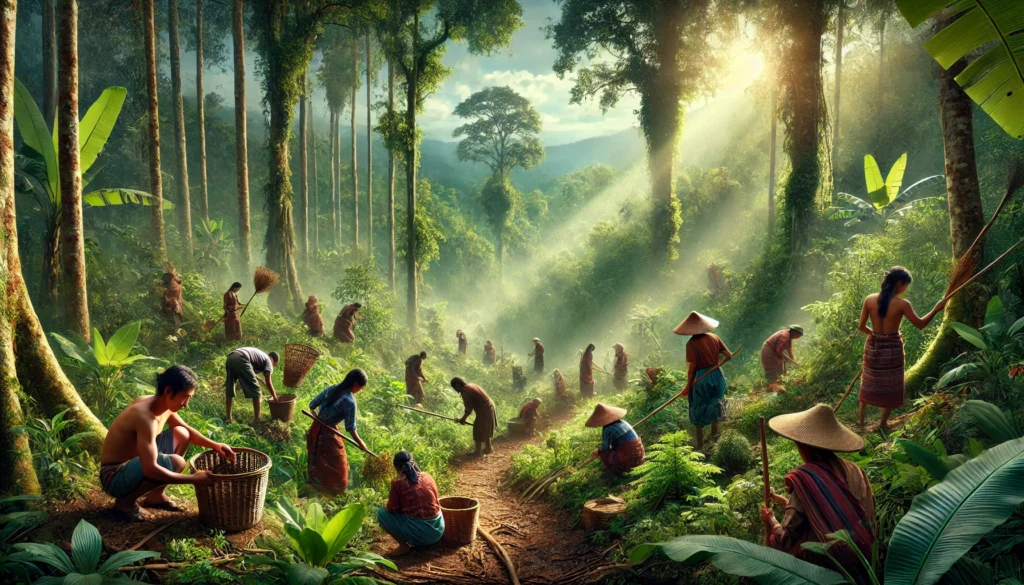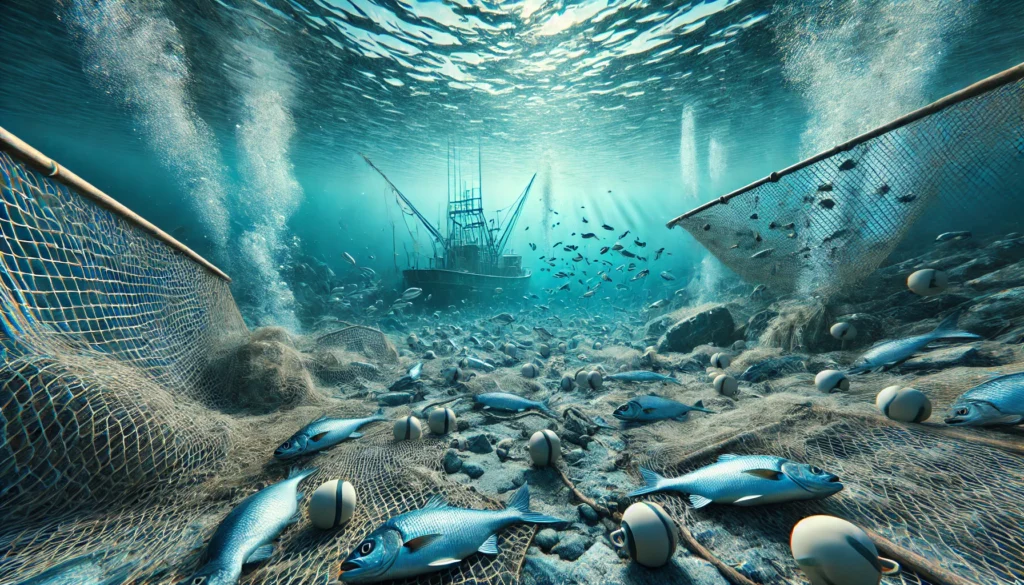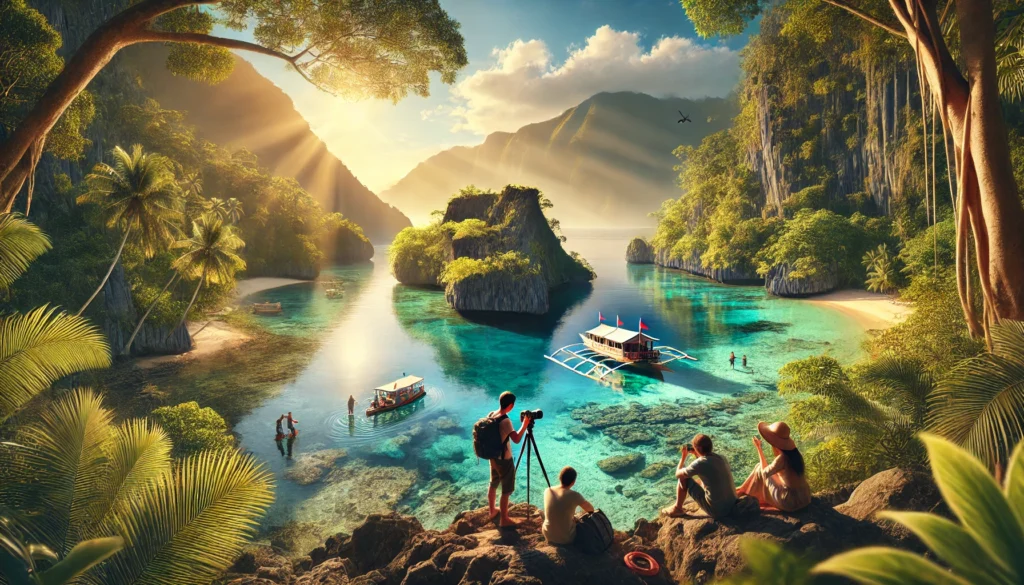Hey there, eco-warriors and curious minds! Today, we’re diving deep into a topic that’s as old as the hills but as fresh as the morning dew. Buckle up, because we’re about to embark on a journey through time and space to explore the incredible role of Indigenous peoples in conservation. Trust me, by the end of this, you’ll be ready to trade your cape for a loincloth (just kidding, please keep your clothes on).
The OG Guardians of the Galaxy (Earth Edition)
Picture this: long before we had national parks, before “reduce, reuse, recycle” became a mantra, and way before it was cool to carry around metal straws, Indigenous peoples were out there doing the real work. They were the original environmental superheroes, minus the spandex suits (though I’m sure they’d rock them if given the chance).
Indigenous peoples have been the custodians of our planet for millennia. They’ve developed intricate systems of knowledge and practices that have allowed them to live in harmony with nature. It’s like they’ve had a group chat with Mother Nature for thousands of years, and we’re just now trying to slide into her DMs.
The Numbers Game
Let’s throw some mind-blowing stats at you:
| Statistic | Value |
|---|---|
| Percentage of global population that is Indigenous | 5% |
| Percentage of global biodiversity under Indigenous stewardship | 80% |
| Number of distinct Indigenous cultures | 5,000+ |
| Languages spoken by Indigenous peoples | 4,000+ |
Impressive, right? It’s like they’re playing Monopoly with nature, and they’ve got hotels on all the best properties.
The Secret Sauce: Traditional Ecological Knowledge (TEK)
Now, you might be wondering, “What’s their secret? Did they all attend some ancient Hogwarts for ecology?” Well, not quite, but they do have something equally magical: Traditional Ecological Knowledge, or TEK for short (because even ancient wisdom needs a cool acronym).
TEK is the accumulated knowledge, practices, and beliefs about the relationship between living beings and their environment, passed down through generations. It’s like a Wikipedia for nature, but instead of being edited by random internet users, it’s curated by people who have lived in and observed their ecosystems for centuries.
Components of TEK:
- Observation: Keen eye for environmental changes (they noticed climate change before it was trending on Twitter).
- Practice: Sustainable resource management (they were into zero waste before it became an Instagram aesthetic).
- Belief: Spiritual connection with nature (they were talking to plants long before it became a millennial coping mechanism).
- Adaptation: Flexibility in the face of environmental changes (they’re the original influencers of resilience).
This knowledge isn’t just some old wives’ tales (although we should probably stop using that phrase because old wives often know their stuff). It’s a sophisticated understanding of ecological processes that has stood the test of time. It’s so reliable that modern scientists are now turning to Indigenous peoples for insights on everything from medicinal plants to climate change adaptation.
From the Amazon to the Arctic: Indigenous Conservation in Action
Now, let’s take a whirlwind tour of some Indigenous conservation efforts around the globe. Buckle up, because this is going to be more exciting than a season finale of “Survivor” (and with actual survival skills involved).
The Amazon: More than Just a Big Online Retailer
In the Amazon rainforest, Indigenous peoples have been playing a real-life game of “Protectors of the Forest” for centuries. They’ve developed agricultural techniques that actually enhance biodiversity instead of destroying it. It’s like they’re playing SimCity on expert mode, and winning.
The Kayapo people, for instance, have been using fire management techniques that prevent large-scale wildfires and promote biodiversity. They’re basically the firefighters of the forest, but with cooler face paint.
Australia: Where the Indigenous Peoples are Hotter than the Weather
Down under, Aboriginal and Torres Strait Islander peoples have been managing the land for over 65,000 years. That’s older than sliced bread, the wheel, and probably Keith Richards.
They use controlled burning techniques, known as “fire-stick farming,” to prevent bushfires and promote new growth. It’s like they’re giving the land a spa treatment – a little heat here, a little massage there, and voila! A healthier ecosystem.
The Arctic: Chilling with the Inuit
Up in the frozen north, Inuit communities have been the OG climate scientists. They’ve been observing and adapting to changes in sea ice, wildlife patterns, and weather long before we had fancy satellites and computer models.
Their traditional knowledge is now being incorporated into climate change studies. It’s like they’re the weather app we didn’t know we needed – more accurate and with a much cooler interface.
Why Indigenous Conservation Matters (Hint: It’s Not Just About Looking Cool in Traditional Outfits)
Now, you might be thinking, “This is all fascinating, but why should I care? I’ve got avocado toast to Instagram and TikTok dances to learn.” Well, buckle up buttercup, because here’s why Indigenous conservation is more important than your social media clout:
- Biodiversity Bonanza: Indigenous territories often have higher biodiversity than government-protected areas. It’s like they’re running a luxury hotel for species, and every creature is a VIP.
- Climate Change Champions: Indigenous practices often contribute to climate change mitigation. They’re the real climate influencers, and they didn’t even need a fancy marketing team.
- Sustainable Resource Management: Their traditional practices often ensure sustainable use of resources. It’s like they’ve been playing a millennia-long game of “Don’t Break the Nature,” and they’re winning.
- Cultural Preservation: Conservation of land often means preservation of culture. It’s a two-for-one deal that’s better than any Black Friday sale.
- Knowledge Goldmine: Their traditional knowledge can provide insights for modern conservation efforts. It’s like having a cheat code for the game of ecological balance.
The Not-So-Fantastic Beasts and Where to Find Them: Challenges Faced by Indigenous Conservationists
Now, before you start thinking that Indigenous peoples have it all figured out and we should just hand over the keys to the planet, let’s talk about some of the challenges they face. Spoiler alert: it’s not all dreamcatchers and spirit animals.
Land Rights: The Ultimate Game of Monopoly
Many Indigenous communities struggle with land rights issues. Imagine playing Monopoly, but someone else keeps claiming your properties and building hotels on them. Not cool, right?
| Issue | Impact |
|---|---|
| Lack of legal recognition | Difficulty in protecting traditional lands |
| Displacement | Loss of access to traditional resources |
| Resource exploitation | Degradation of ecosystems |
Cultural Erosion: When Traditions Go Out of Style (But Shouldn’t)
With the onslaught of globalization, many Indigenous cultures are at risk of losing their traditional knowledge. It’s like their ancestral wisdom is competing with cat videos for attention, and let’s face it, cat videos are tough competition.
Climate Change: When Mother Nature Throws a Tantrum
Indigenous peoples are often on the front lines of climate change impacts. It’s like they’re in a boxing match with extreme weather, and they didn’t even sign up for the fight.
Lack of Recognition: The Invisibility Cloak They Never Asked For
Despite their crucial role in conservation, Indigenous peoples often lack recognition in national and international conservation policies. It’s like they’re the backstage crew of a Broadway show – essential, but rarely in the spotlight.
Joining Forces: How Modern Conservation is (Finally) Embracing Indigenous Wisdom
Now, here’s where things start to get exciting. Like a buddy cop movie where the by-the-book rookie finally realizes the value of the old-school detective’s unconventional methods, modern conservation efforts are starting to team up with Indigenous knowledge.
The United Nations: More than Just a Place for Dramatic Speeches
The UN has recognized the importance of Indigenous peoples in conservation efforts. In 2007, they adopted the Declaration on the Rights of Indigenous Peoples. It’s like they finally added Indigenous peoples to the group chat of global decision-making.
REDD+: Not Just a Color, But a Cool Conservation Program
REDD+ (Reducing Emissions from Deforestation and Forest Degradation) is a UN program that aims to combat climate change through forest conservation. Many REDD+ projects now incorporate Indigenous knowledge and practices. It’s like they’re finally realizing that Indigenous peoples have the cheat codes for forest management.
Biocultural Conservation: When Biology Meets Anthropology and They Have a Beautiful Baby
This approach recognizes the interconnectedness of biological and cultural diversity. It’s like realizing that nature and culture are in a long-term relationship, and it’s time we stopped trying to break them up.
How You Can Support Indigenous Conservation (No, Watching “Pocahontas” Doesn’t Count)
Alright, by now you’re probably fired up and ready to support Indigenous conservation efforts. But how? Don’t worry, I’ve got you covered. Here are some ways you can help that don’t involve time travel or suddenly becoming an expert in traditional ecological practices:
- Educate Yourself: Learn about Indigenous peoples in your area and their conservation efforts. It’s like following them on Instagram, but with actual meaningful content.
- Support Indigenous-led Organizations: There are many organizations out there doing great work. Do your research and support them. It’s like crowdfunding, but instead of getting a quirky gadget, you’re helping save the planet.
- Be a Conscious Consumer: Support businesses that partner with Indigenous communities and respect their rights. It’s like ethical shopping, but with a cool cultural twist.
- Raise Awareness: Share what you’ve learned with others. Be the Indigenous conservation influencer you wish to see in the world.
- Advocate for Indigenous Rights: Support policies that recognize and protect Indigenous land rights and traditional practices. It’s like being a social justice warrior, but with more trees involved.
The Real Circle of Life (Sorry, Lion King)
As we wrap up this journey through the world of Indigenous conservation, let’s take a moment to reflect. Indigenous peoples have been the unsung heroes of conservation for millennia. They’re the real MVPs of the environment, the OG green warriors, the true Loraxes who speak for the trees.
Their traditional knowledge and practices offer invaluable insights for our modern conservation challenges. It’s like they’ve been playing a complex strategy game with nature for thousands of years, and we’re just now realizing we should probably read the manual they’ve written.
So, the next time you’re sipping on your ethically sourced, biodegradable straw smoothie and feeling pretty good about your eco-credentials, remember this: Indigenous peoples were into conservation before it was cool. They’re the hipsters of environmental protection, but with actual substance behind their style.
Let’s give credit where credit is due and support Indigenous conservation efforts. After all, when it comes to saving our planet, we’re all in this together – Indigenous peoples just happen to have a few millennia head start.
Now, if you’ll excuse me, I’m off to see if I can trade my car for a canoe and my apartment for a treehouse. Who’s with me?
Disclaimer: This blog post was written based on information available up to 2020. While we strive for accuracy, the world of conservation and Indigenous rights is constantly evolving. If you spot any inaccuracies, please let us know so we can update our information faster than a cheetah chasing its prey (which, by the way, some Indigenous peoples probably have a technique for observing without disturbing).




